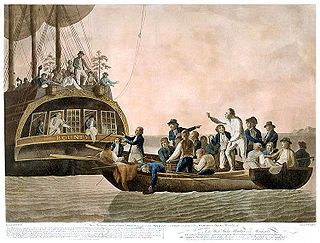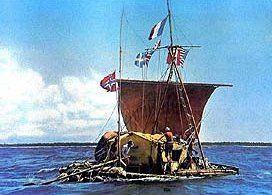
Tag: Open Thread
May 01 2010
Open Maypole
May 01 2010
On This Day in History: May1
Apr 30 2010
Afternoon Edition
| From Yahoo News Top Stories |
1 Disaster looms as oil slick reaches US coast
by Erica Berenstein, AFP
21 mins ago
| VENICE, Louisiana (AFP) – Oil from a giant Gulf of Mexico slick washed onto Louisiana shores Friday, threatening an environmental calamity as President Barack Obama called for a “thorough review” of the disaster.
With up to 200,000 gallons of oil a day spewing into the Gulf of Mexico from a ruptured well, the accident stemming from a sunken offshore rig may soon rival the Exxon Valdez disaster as the worst oil spill in US history. Strong southeast winds blew the first oily strands of the slick directly onto the coastal wetlands of South Pass near the mouth of the Mississippi river late Thursday, Billy Nungesser, president of Plaquemines Parish, where oil washed ashore, told AFP. |
Apr 30 2010
There Must Be Some Kinda Way Outta Here
There’s too much confusion
I can’t get no relief
Businessmen, they drink my wine
Plowmen dig my earth
None will level on the line, nobody offered his word, hey…
Apr 30 2010
On This Day in History: April 30
 1803 – Louisiana Purchase: The United States purchases the Louisiana Territory from France for $15 million, more than doubling the size of the young nation. With this acquisition President Thomas Jefferson secured the Port of New Orleans, free access to the Mississippi River and opened expansion of US territory westward to the Rocky Mountains.
1803 – Louisiana Purchase: The United States purchases the Louisiana Territory from France for $15 million, more than doubling the size of the young nation. With this acquisition President Thomas Jefferson secured the Port of New Orleans, free access to the Mississippi River and opened expansion of US territory westward to the Rocky Mountains.
Originally the purchase was for the port of new Orleans, portions of the east bank of the Mississippi, and free navigation of the river for U.S. commerce but at the last minute, on April 11, the French Minister Talleyrand was ordered by Napoleon to offer the entire territory to US Minster, Robert Livingston. This was mostly due to France’s difficulties in the Caribbean. Napoleons’ inability to secure Santo Domingo made the granaries of Louisiana useless without the the sugar. Considering his other difficulties with Spain and the temperament of the Americans, Napoleon threw in the entire territory for less than 5 cents an acre.
1812 – The Territory of Orleans becomes the 18th U.S. state under the name Louisiana.
Apr 29 2010
Afternoon Edition
Afternoon Edition is an Open Thread
| From Yahoo News Top Stories |
1 Louisiana coast under threat as oil spill worsens
by Allen Johnson, AFP
Thu Apr 29, 7:45 am ET
| NEW ORLEANS, Louisiana (AFP) – A giant oil slick threatened Thursday to pollute the fragile wetlands of Louisiana, as officials warned that toxic crude was pouring from a ruptured well into the Gulf of Mexico five times faster than previously estimated.
Louisiana Governor Bobby Jindal called on the federal government for emergency help to stave off an environmental disaster after a sudden change in the wind direction turned week-long response efforts on their head. The dangerous slick early Thursday reportedly was just 16 miles (25 kilometers) from shore, but hundreds of miles of coastline were under threat in the states of Louisiana, Mississippi, Alabama, and Florida. |
Apr 29 2010
On This Day in History: April 29
 On this day in 1945, Dachau was liberated by American troops of the U.S. Seventh Army’s 45th Infantry Division, headed by Gen, George Patton, and subdivision of the camp by the 42nd Rainbow Division. There were 123 sub-camps and factories in the vicinity of the town.
On this day in 1945, Dachau was liberated by American troops of the U.S. Seventh Army’s 45th Infantry Division, headed by Gen, George Patton, and subdivision of the camp by the 42nd Rainbow Division. There were 123 sub-camps and factories in the vicinity of the town.
Dachau was the first concentration camp opened by the Nazi regime in 1933 on the grounds of an abandoned munitions factory less than 10 miles northeast of Munich. The camp was established 5 weeks after Adolf Hitler took power as chancellor and was used to house political prisoners, In 1938, the camp was primarily occupied by Jews. The camp served as a training center for the SS guards at other camps, medical experiments and forced labor.
Thousands of inmates died or were executed at Dachau, and thousands more were transferred to a Nazi extermination center near Linz, Austria, when they became too sick or weak to work. In 1944, to increase war production, the main camp was supplemented by dozens of satellite camps established near armaments factories in southern Germany and Austria. These camps were administered by the main camp and collectively called Dachau.
snip
As they neared the camp, the Americans found more than 30 railroad cars filled with bodies in various states of decomposition. Inside the camp there were more bodies and 30,000 survivors, most severely emaciated. Some of the American troops who liberated Dachau were so appalled by conditions at the camp that they machine-gunned at least two groups of captured German guards. It is officially reported that 30 SS guards were killed in this fashion, but conspiracy theorists have alleged that more than 10 times that number were executed by the American liberators. The German citizens of the town of Dachau were later forced to bury the 9,000 dead inmates found at the camp.
Apr 29 2010
Afternoon Edition
Afternoon Edition is an Open Thread
| From Yahoo News Top Stories |
1 Pressure mounts on Germany to aid Greece
by Simon Sturdee, AFP
2 hrs 40 mins ago
| BERLIN (AFP) – Pressure piled on Germany to stop stalling a package to rescue Greece from crippling debts Wednesday as the International Monetary Fund warned confidence in the whole eurozone was on the line.
The euro hit a one-year dollar low with a downgrade of Spain’s credit rating accelerating its fall, escalating fears that the Greek debt crisis is spreading across Europe a day after Greek debt was slashed to junk status. Greece meanwhile acted to stop speculators operating on the Athens stock exchange as the interest rate it has to pay to borrow money hit 11.1 percent, only trailing Pakistan and Venezuela in the world’s highest interest payers. |
Worth reading.
But with the General Workers Confederation announcing a general strike for May 5 against “neo-liberal blackmail”, his government is still holding out against proposals by the EU and IMF to cut salaries.
“We have been asked for a cut which we do not accept,” Labour Minister Andreas Loverdos said.
Apr 28 2010
On This Day in History: April 28
On this day, two events occurred involving the South Pacific. Separated by 158 years, one was a mutiny, the other a grand adventure.
 Apr 28, 1789: Mutiny on the HMS Bounty Mutiny on the Bounty: The mutiny was led by Fletcher Christian against the commanding officer, William Bligh. The sailors were attracted to the idyllic life on the Pacific island, and repelled by the alleged cruelty of their captain. Captain Bligh and 18 sailors were set a drift in the South Pacific, near the island of Tonga. Christian along with some of the mutineers and native Tahitians eventually settled on Pitcairn Island an uninhabited volcanic island about 1000 miles south of Tahiti. The mutineers who remained behind on Tahiti were eventually arrested and returned to England where three were hanged. The British never found Christian and the others. Captain Bligh and the 18 others eventually arrived in Timor.
Apr 28, 1789: Mutiny on the HMS Bounty Mutiny on the Bounty: The mutiny was led by Fletcher Christian against the commanding officer, William Bligh. The sailors were attracted to the idyllic life on the Pacific island, and repelled by the alleged cruelty of their captain. Captain Bligh and 18 sailors were set a drift in the South Pacific, near the island of Tonga. Christian along with some of the mutineers and native Tahitians eventually settled on Pitcairn Island an uninhabited volcanic island about 1000 miles south of Tahiti. The mutineers who remained behind on Tahiti were eventually arrested and returned to England where three were hanged. The British never found Christian and the others. Captain Bligh and the 18 others eventually arrived in Timor.
Years later on 1808. am American whaling vessel discovered the colony of women and children led by the sole surviving mutineer, John Adams. The Bounty had been stripped and burned. Christian and the other 8 mutineers were dead. Adams was eventually granted amnesty and remained the patriarch of Pitcairn Island until his death in 1829.
 1947 Thor Heyerdahl and five crew mates set out from Peru on the Kon-Tiki to prove that Peruvian natives could have settled Polynesia. His crew of six fellow Norwegians set sail from Peru on a raft constructed from balsa logs and other materials that were indigenous to the region at the time of the Spanish Conquistadors. After 101 days crossing over 400 miles they crashed into a reef at Raroia in the Tuamotu Islands on August 7, 1947. Heyerdahl’s book, “The Kon-Tiki Expedition: By Raft Across the South Seas”, became a best seller, the documentary won an Academy Award in 1951. The original raft is on display in the Kon-Tiki Museum in Oslo. Heyerdahl died April 18, 2002 in Italy.
1947 Thor Heyerdahl and five crew mates set out from Peru on the Kon-Tiki to prove that Peruvian natives could have settled Polynesia. His crew of six fellow Norwegians set sail from Peru on a raft constructed from balsa logs and other materials that were indigenous to the region at the time of the Spanish Conquistadors. After 101 days crossing over 400 miles they crashed into a reef at Raroia in the Tuamotu Islands on August 7, 1947. Heyerdahl’s book, “The Kon-Tiki Expedition: By Raft Across the South Seas”, became a best seller, the documentary won an Academy Award in 1951. The original raft is on display in the Kon-Tiki Museum in Oslo. Heyerdahl died April 18, 2002 in Italy.


